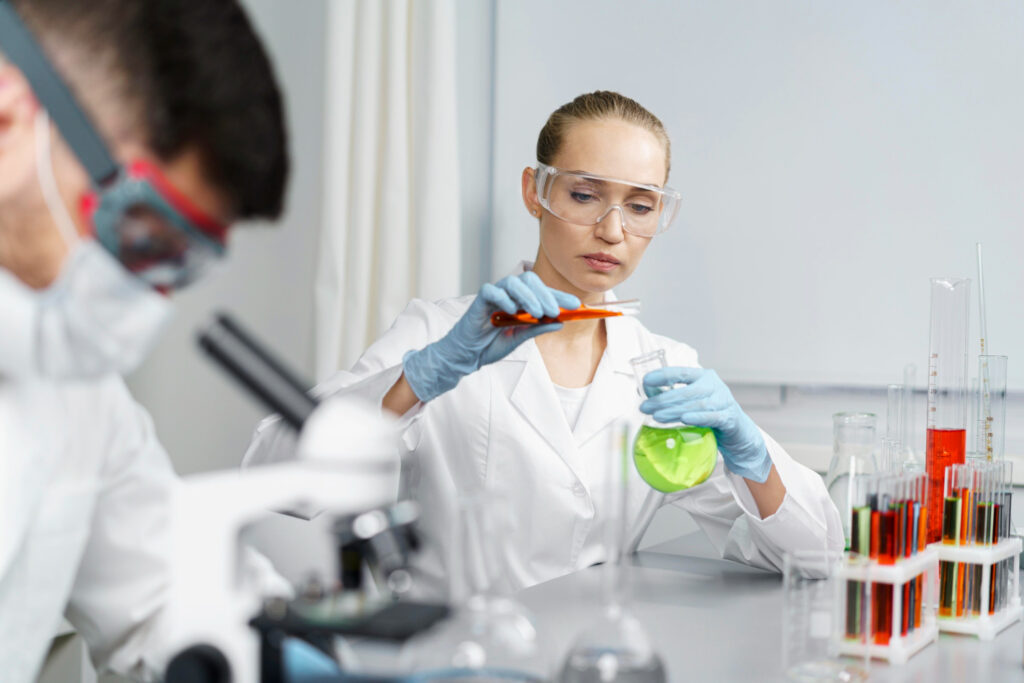The Science Blog

The Rise of Artificial Life: Creating Synthetic Organisms
Few fields in science and technology excite like synthetic biology and bioengineering. These disciplines are at the forefront of innovation, promising to reshape our understanding of life itself. Creating synthetic organisms, or artificial life, is a major breakthrough. It could change medicine, agriculture, and environmental science for the better. This blog looks at the rise of artificial life. It explores how synthetic biology and bioengineering help create synthetic organisms.
The concept of synthetic biology is not just about understanding life as we know it but about reimagining life as it could be. It’s about using the principles of engineering to design and construct new biological parts, devices, and systems. As we embark on this journey, we will explore the significance of artificial cells and the profound impact they could have on our world.
Key Benefits / Why It Matters

The Promise of Synthetic Biology
Synthetic biology holds the promise of addressing some of the world’s most pressing challenges. The possibilities are huge and diverse. They include sustainable biofuels, disease-resistant crops, and new medical treatments. Scientists use synthetic biology to create organisms that can do specific tasks. This leads to innovations that once seemed like science fiction.
Synthetic biology can create artificial cells. These cells mimic natural ones but have better abilities.
These artificial cells can be programmed to:
- Produce pharmaceuticals
- Degrade pollutants
- Generate energy
Our imagination and knowledge of biological systems set the limits.
Real-Life Applications and Data-Backed Insights
The real-world applications of synthetic biology are already being realised. Researchers have engineered bacteria to make insulin. Insulin is key for managing diabetes. This bioengineering achievement improves insulin production. It’s now more efficient and cheaper, showing the real benefits of synthetic biology.
Moreover, synthetic organisms are being developed to address environmental issues. Scientists are developing bioengineered microbes that can break down plastic waste. This could help solve the global plastic pollution crisis. Experiments show that synthetic organisms may greatly lower the environmental harm caused by human actions.
Step-by-Step Guide / Actionable Insights
Understanding Synthetic Biology
To fully appreciate the rise of artificial life, it is essential to understand the fundamentals of synthetic biology. This field blends biology and engineering. It focuses on creating new biological entities.
Step 1: Identifying the Problem
Every synthetic biology project begins with identifying a specific problem or challenge. This could range from developing a new drug to creating a sustainable energy source. The goal is to design a biological solution that addresses this problem effectively.
Step 2: Designing the Biological System
Once the problem is identified, the next step is to design the biological system. This means choosing the right genetic parts and pathways to achieve the desired function. Bioengineers use advanced software to model and simulate these systems. They do this before building them in the lab.
Step 3: Constructing the Synthetic Organism
The construction phase means putting the genetic parts into a host organism. This could be bacteria or yeast. This process needs careful attention and skill. Small mistakes can cause big problems. Bioengineers use tools like CRISPR-Cas9 to edit genes. This helps make sure the synthetic organism works as planned.
Step 4: Testing and Optimisation
After building the synthetic organism, it is tested thoroughly to make sure it works as intended. This involves conducting experiments to assess its efficiency, stability, and safety. Issues found during testing are fixed by optimizing the genetic design. This helps improve performance.
Examples, Case Studies, and Statistics
One notable example of synthetic biology in action is the creation of synthetic yeast. Researchers redesigned the yeast genome. This change lets it produce valuable compounds, such as biofuels and pharmaceuticals. This breakthrough shows how synthetic organisms can change industries and promote sustainable development.
Statistics also highlight the growing impact of synthetic biology. A MarketsandMarkets report says the global synthetic biology market will hit £13.7 billion by 2025. This growth is fueled by progress in bioengineering and more investment in research and development.
Additional Expert Tips & Common Mistakes to Avoid

Best Practices in Synthetic Biology
Synthetic biology has great potential. So, it’s important to follow best practices for success. Here are some expert tips to consider:
- Interdisciplinary Collaboration: Synthetic biology needs teamwork. Biologists, engineers, chemists, and computer scientists must work together. Building a diverse team with complementary expertise is essential for success.
- Ethical Considerations: Making synthetic organisms brings up ethical questions. It challenges our ideas about life and poses risks linked to bioengineering. Engaging in ethical talks is key. We must follow rules to support responsible innovation.
- Public Engagement: Engaging the public is key. It helps build trust and acceptance of synthetic biology. Transparency is also important in this process. Teaching the public about synthetic organisms can clear up myths and help people make better choices.
Common Mistakes and Misconceptions
Despite its promise, synthetic biology is not without challenges. Here are some common mistakes and misconceptions to avoid:
- Overlooking Safety Concerns: Safety is paramount in synthetic biology. Not addressing safety concerns can cause problems and slow down the use of synthetic organisms.
- Underestimating Complexity: Designing synthetic organisms is complex. It needs a strong grasp of biological systems. Underestimating this complexity can lead to project failures and wasted resources.
- Ignoring Regulatory Compliance: Synthetic biology must follow regulations for safety and ethics. Ignoring regulatory compliance can lead to legal issues. It can also slow down the commercialization of synthetic organisms.
Advanced Insights / Expert Recommendations
Exploring the Frontiers of Synthetic Biology
Synthetic biology is evolving. New frontiers are opening up, bringing exciting possibilities. One frontier is creating minimal cells. These are simplified versions of natural cells. They include only the essential parts of life. These minimal cells help us grasp the basic principles of life. They also aid in creating more efficient synthetic organisms.
Another promising area is the integration of artificial intelligence (AI) with synthetic biology. AI speeds up the design and optimization of synthetic organisms. It does this by analyzing large data sets and predicting how biological systems behave. This synergy between AI and synthetic biology has the potential to unlock new levels of innovation and efficiency.
Unique Industry Perspectives
Experts are hopeful about synthetic biology. They believe it can help with sustainable development. Dr. Emily Leproust, CEO of Twist Bioscience, says, “Synthetic biology will change industries. It allows us to create new materials, sustainable chemicals, and better therapies.” The key to success lies in harnessing the power of nature and engineering it for the benefit of society.”
Artificial Life: A New Dawn in Science and Innovation
In conclusion, artificial life is growing thanks to synthetic biology and bioengineering. This marks a big change in science and technology. Synthetic organisms create new chances to tackle global issues and enhance life quality. Exploring synthetic biology is exciting. We need teamwork across fields, careful ethics, and public involvement. This way, we can innovate responsibly.
What are your thoughts on the rise of artificial life? How do you envision the future of synthetic biology? Join the discussion! Let’s explore the exciting world of synthetic organisms together.









